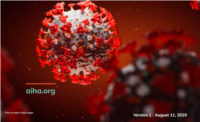As companies return to work in office buildings, retail centers, and other public places, employers must take steps to reduce the risk of employees and customers contracting COVID-19. Health officials have reported that many people infected with the virus, even if they never develop symptoms, can spread the disease. Airborne viral particles are produced when infected people cough, sneeze, sing, or even when they speak or just breathe. People who inhale these viral particles may contract COVID. This airborne route of exposure is widely regarded to present the greatest risk of infection.
Guidance for employers to reduce inhalation exposure should include administrative controls (e.g. physical distancing measures, frequent
hand-washing, working from home, and physical separation); engineering controls (i.e. physical barriers, enhanced ventilation, and air filtering devices); and wearing necessary personal protective equipment (PPE) (e.g. N95 or other respirators, disposable gloves, and eye protection).
People can also contract the virus by touching contaminated surfaces and then touching their eyes, nose or mouth. Contact exposures are believed to be secondary to inhalation exposures but should be part of control measures to prevent infection. Surfaces become contaminated when droplets from an infected person’s breath, cough, or sneeze land on an indoor surface. To reduce the risk of exposure from contaminated surfaces, employers can implement a cleaning and disinfection program, the subject of this guidance from the American Industrial Hygiene Association (AIHA). Before the COVID-19 pandemic, cleaning and disinfecting programs to reduce the spread of infections were not commonplace outside of health care and long-term care facilities. Establishing enhanced routine cleaning and disinfection procedures in offices, factories, distribution warehouses, call centers, pharmacies, grocery stores, and other non-health care workplaces is a critical step in reducing exposures and the risk of infection. AIHA has developed a companion guidance document for Custodians, Cleaning, and Maintenance Staff that provides more detailed information on this subject.





